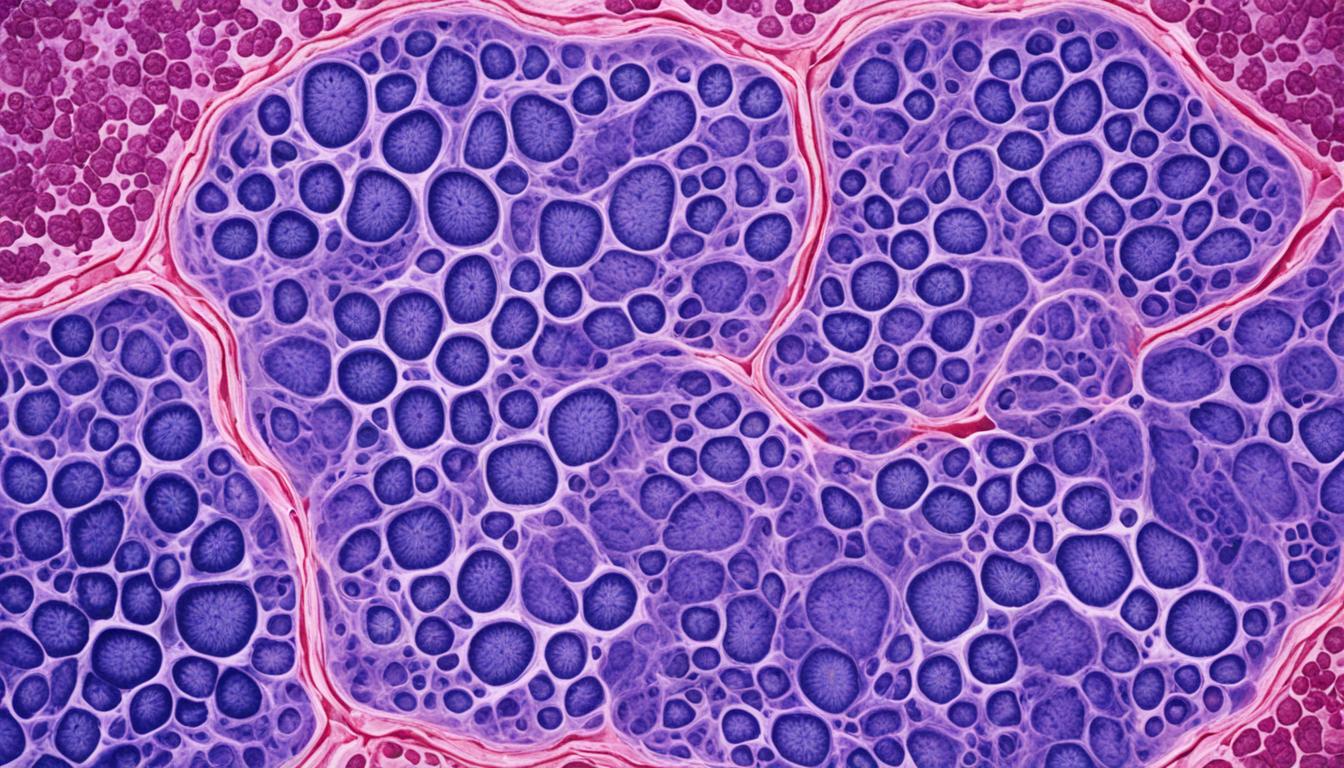Moles disease, also known as melanocytic nevi, is a common skin condition. It’s recognized by brown or black moles on the skin. These moles come in different sizes and shapes. While many moles are harmless, some could turn into melanoma, a form of skin cancer. Knowing about moles, their symptoms, and how to treat them is crucial.
Key Takeaways:
- Moles disease, also known as melanocytic nevi, is a common skin condition.
- Moles are usually brown or black in color and can vary in size and shape.
- Some moles may develop into skin cancer, such as melanoma.
- It is important to monitor any changes in moles and seek medical attention if any worrisome symptoms arise.
- Proper sun protection and regular monitoring of moles are essential in reducing the risk of developing moles disease.
Symptoms of Moles Disease
Moles disease, also called melanocytic nevi, shows several symptoms. These signs can help spot and watch the disease. Knowing these symptoms lets people act fast to get checkups.
Key symptoms of moles disease are:
- Getting new moles.
- Seeing changes in old moles’ size, shape, or color.
- Feeling itchy or seeing moles bleed.
- Noticing moles with uneven sides or weird shapes.
It’s important to watch your moles and notice any changes. If you see these issues stay or worry you, see a doctor. They can check your skin and give you the right advice.
Finding and treating problems early can help a lot. It might lower the chance of bad outcomes. Knowing moles disease symptoms puts you in control. You can care for your skin smartly and see a doctor anytime you need to.
Causes and Risk Factors of Moles Disease
Moles disease, or melanocytic nevi, can be caused by a few things. Genetic factors and UV radiation are the main culprits. If you’ve got moles in your family, you might get them too. This is because of certain genes that affect how our skin cells work. But that’s not all. Spending too much time in the sun or in tanning beds is also a big risk. The sun’s UV rays can mess with the DNA of our skin cells. This can make moles grow where they shouldn’t, especially if you have light skin.
Now, if you’ve had a lot of sunburns or if you’ve been out in the sun way too much, you’re more likely to see moles pop up. Sunburns and too much sun can cause damage and changes in your skin’s DNA. This can lead to moles forming.
So, how to lower your chances of having moles on your skin? Always protect yourself from the sun. Use sunscreen and wear clothes that keep the sun off. Try not to be in direct sunlight for long, especially when the sun is strongest. Also, keep an eye on your skin. If you see any weird changes in your moles, like if they grow or change color, tell a doctor right away. Finding and treating skin issues early is very important.
Risk Factors for Moles Disease
| Risk Factors | Description |
|---|---|
| Genetic Predisposition | Individuals with a family history of moles are at a higher risk of developing moles disease. |
| UV Radiation | Exposure to UV radiation from sunlight or tanning beds increases the risk of developing moles. |
| Fair Skin | People with fair skin have less natural protection against UV radiation, making them more vulnerable to moles disease. |
| History of Sunburns | Repeated sunburns and excessive sun exposure over time can contribute to the development of moles. |
Diagnosis and Treatment of Moles Disease
Finding moles disease starts with a close look at your skin. A trained healthcare worker checks the moles you have. They look at their size, shape, and color. They might also do a biopsy. This means they take a small piece of the mole to check if it’s dangerous.
To treat moles disease, removing suspicious ones is common. This is often done if a mole looks like it could be cancer. Laser treatment or freezing off the mole are other ways to get rid of them.
Stem cell therapy is a new and hopeful option for treating moles. It uses stem cells to help the skin heal better. This way, there’s less scarring after removing a mole. Even though it’s new, using stem cells looks promising for mole care. More studies are being done to find out how well it really works.

